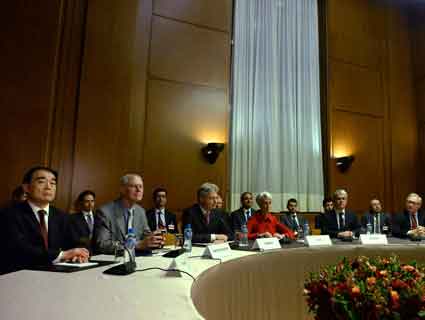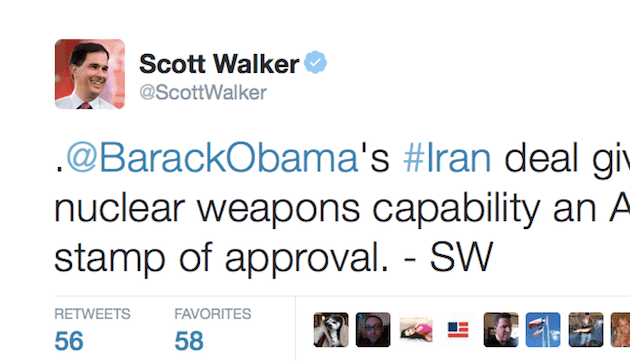
Apparently this is Let’s Make a Deal week. First the Greeks, now the Iranians. The deal with Iran restricts their supply of uranium, cuts down the number of centrifuges they can run, forces them to account for past activity, and puts in place strict verification measures. So when does it take effect: Here’s the Washington Post:
The agreement will not take effect until Iran is certified to have met its terms — something Iran says will happen in a matter of weeks but
that Western diplomats have said could take at least until the end of the year.
Hmmm. That’s not necessarily a good start. So when will sanctions be lifted?
From the Post: A senior Obama administration official said that, until Iranian compliance is verified, an 18-month old interim agreement restricting Iran’s activities, and sanctions, will remain in place.
From the New York Times: Diplomats also came up with unusual procedure to “snap back” the sanctions against Iran if an eight-member panel determines that Tehran is violating the nuclear provisions.
The members of the panel are Britain, China, France, Germany, Russia, the United States, the European Union and Iran itself. A majority vote is required, meaning that Russia, China and Iran could not collectively block action. The investigation and referral process calls for a time schedule of 65 days, tight compared to the years the atomic energy agency has taken to pursue suspicious activity.
And here’s the Guardian with a bullet list of the main points of the agreement:
- Iran will reduce its enrichment capacity by two-thirds. It will stop using its underground facility at Fordow for enriching uranium.
- Iran’s stockpile of low enriched uranium will be reduced to 300kg, a 96% reduction. It will achieve this reduction either by diluting it or shipping it out of the country.
- The core of the heavy water reactor in Arak will be removed, and it will be redesigned in such a way that it will not produce significant amounts of plutonium.
- Iran will allow UN inspectors to enter sites, including military sites, when the inspectors have grounds to believe undeclared nuclear activity is being carried out there. It can object but a multinational commission can override any objections by majority vote. After that Iran will have three days to comply. Inspectors will only come from countries with diplomatic relations with Iran, so no Americans.
- Once the International Atomic Energy Agency (IAEA) has verified that Iran has taken steps to shrink its programme, UN, US and EU sanctions will be lifted.
- Restrictions on trade in conventional weapons will last another five years, and eight years in the case of ballistic missile technology.
- If there are allegations that Iran has not met its obligations, a joint commission will seek to resolve the dispute for 30 days. If that effort fails it would be referred to the UN security council, which would have to vote to continue sanctions relief. A veto by a permanent member would mean that sanctions are reimposed. The whole process would take 65 days.
Overall, the deal seems to address most of the issues brought up by skeptics. Sanctions won’t be lifted right away. There’s an expedited process to reimpose them if Iran cheats. Military sites will be open to inspectors. Conventional weapons bans will continue for five years.
Benjamin Netanyahu is nevertheless apoplectic, of course, but who cares? He would be no matter what the deal looked like. At first glance, though, it looks reasonable. And since President Obama can—and will—veto any congressional attempt to disapprove the agreement, it will take a two-thirds vote to torpedo it. Presumably Obama can manage to scrape up at least a third of Congress to support it, so it should be pretty safe. That vote will take place in about two months.














